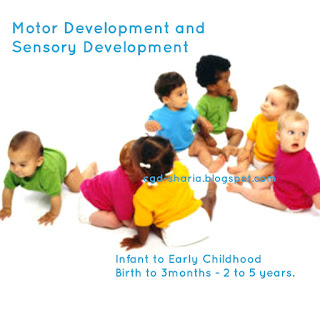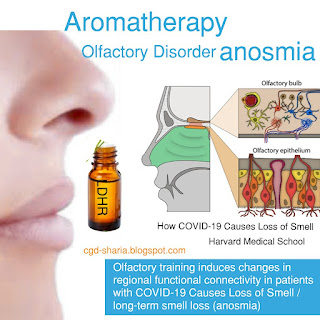Motor Development and Sensory Development (Infant to Early Childhood)
The foundation of growth, development, and learning in a child starts with sensory and motor interaction with the world. The brain is built from the bottom up and this starts with movement and sensory exploration
Motor Development
Gross motor skills involve the ability to use large muscle for movement such as lifting the head, crawling, or walking. These skills begin to develop in infancy and early childhood.
Sensory Development
Sensory skills, such as taste, touch, visions, hearing and smell development and exploration. Infants explore with their mouth and progress to exploring with the hands. Sensory skills become more refined in early childhood.
Jean Piaget was a 20th century forward - thinking psychologist who focused his COGNITIVE studies on children.
He found that children think in a completely different way than adult, a truly remarkable find since many
He found that children think in a completely different way than adult, a truly remarkable find since many
<script async src="//pagead2.googlesyndication.com/pagead/js/adsbygoogle.js"></script>
<script>
(adsbygoogle = window.adsbygoogle || []).push({
google_ad_client: "ca-pub-4280545194065456",
enable_page_level_ads: true
});
</script>
psychologists at the same way as adult but were merely less competent.
 |
Piaget also broke down children's cognitive development into stages and stressed - the importance of discovery learning where children are provided with opportunities to learn through , hands - on activities and exploration.
Motor and Sensory development in infancy to early childhood:
There is a wide range of typical development.
<script async src="//pagead2.googlesyndication.com/pagead/js/adsbygoogle.js"></script>
<script>
(adsbygoogle = window.adsbygoogle || []).push({
google_ad_client: "ca-pub-4280545194065456",
enable_page_level_ads: true
});
</script>
Birth to Three Months:
🔵 Poor head control
🔵 Hand and leg movement are still jerky
🔵 Movements dominated by infantile reflexes
🔵 While lying on stomach , can raises head to 45 degrees
🔵 Recognizes scent of mother's breast milk
🔵 Hand and leg movement are still jerky
🔵 Movements dominated by infantile reflexes
🔵 While lying on stomach , can raises head to 45 degrees
🔵 Recognizes scent of mother's breast milk
Six to Twelve Months:
By 9 months-
By 9 months-
🔵 Sits independently without support for long periods of time
🔵 Sits in a highchair with a straight back
🔵 Sits in a highchair with a straight back
🔵 Catches self with arm when loses balance
🔵 Able to move from sitting to lying down
🔵 Crawls on belly
🔵 Assumes a hands - and - knees position and begins to rock forward and backward
By 12 months
🔵 Pulls to standing on furniture
🔵 Walks along furniture, holding on for support
🔵 Stands independently for a few moments
🔵 Walks along furniture, holding on for support
🔵 Stands independently for a few moments
🔵 Bends down to pick up an object while holding on for support
🔵 progress to taking two to three independent steps without support
🔵 Begins to walk at ten to eighteen months of age
🔵 Tolerates new and greater variety of food textures
🔵 Likes to explore the environment through mouthing objects , touching various textures and moving.
Twelve to Eighteen Months:
By 15 months-
By 15 months-
🔵 Stands independently
🔵 Squats down to pick up a toy
🔵 Walks independently
🔵 Pulls and carries toys while walking
🔵 Squats down to pick up a toy
🔵 Walks independently
🔵 Pulls and carries toys while walking
By 18 months
🔵 Climbs on and off chairs and furniture
🔵 Walks side ways and backward
🔵 Steps up and down stairs with hand held support
🔵 Begins to run , but in an uncoordinated way
🔵 Explores mainly through vision and touch
🔵 Responds differently to loud and soft noise
🔵 Walks side ways and backward
🔵 Steps up and down stairs with hand held support
🔵 Begins to run , but in an uncoordinated way
🔵 Explores mainly through vision and touch
🔵 Responds differently to loud and soft noise
Eighteen to Twenty four months:
By 24 months-
By 24 months-
🔵 Picks objects off the floor without losing balance
🔵 Walks , stops, and turns without losing balance
🔵 Carries large objects or pulls objects while walking
🔵 Runs with improved coordination
🔵 Kicks a ball forward with one support
🔵 Climbs furniture without assistance
🔵 Walks , stops, and turns without losing balance
🔵 Carries large objects or pulls objects while walking
🔵 Runs with improved coordination
🔵 Kicks a ball forward with one support
🔵 Climbs furniture without assistance
By 24months
🔵 Jumps off a step
🔵 Goes down stairs with hand support on the railing
🔵 Throws a ball forward five feet
🔵 Climbs Stan Ted ladder
🔵 Goes down a slide
🔵 Throws a ball forward five feet
🔵 Climbs Stan Ted ladder
🔵 Goes down a slide
Two to Three years:
🔵 Climbs well
🔵 Kicks a ball without loss of balance
🔵 Jumps from the floor
🔵 Progresses to jumping off the second step
🔵 Balances briefly on one foot
🔵 Begins to pedal a tricycle and propel ride - on - toys
🔵 Walks up and downs stairs, alternating feet on each
🔵 progress to jumping forward four or more inches
🔵 Begins to hop on one feet
🔵 Jumps over a two - inch - high hurdle or obstacle
🔵 Kicks a ball without loss of balance
🔵 Jumps from the floor
🔵 Progresses to jumping off the second step
🔵 Balances briefly on one foot
🔵 Begins to pedal a tricycle and propel ride - on - toys
🔵 Walks up and downs stairs, alternating feet on each
🔵 progress to jumping forward four or more inches
🔵 Begins to hop on one feet
🔵 Jumps over a two - inch - high hurdle or obstacle
Three to Five years:
🔵 Hops , jumps, skips, climbs, swings , and does somersaults
🔵 Rides a tricycle and progress to riding a two wheeled bike
🔵 Throws over hand with greater accuracy
🔵 Balances on one foot for many seconds without support
🔵 Catches a ball consistently
🔵 Hops , jumps, skips, climbs, swings , and does somersaults
🔵 Rides a tricycle and progress to riding a two wheeled bike
🔵 Throws over hand with greater accuracy
🔵 Balances on one foot for many seconds without support
🔵 Catches a ball consistently
<script async src="//pagead2.googlesyndication.com/pagead/js/adsbygoogle.js"></script>
<script>
(adsbygoogle = window.adsbygoogle || []).push({
google_ad_client: "ca-pub-4280545194065456",
enable_page_level_ads: true
});
</script>
However , follow up with a pediatrician if your child shows signs of delays.
Raising family and social awareness:
(Depressed person is not a
burden for your family,
it is your responsibility to love
and care them)
My concern to reach this
massage to everyone..
Use natural painkiller remedy " No Pain" pain goes without side effects.
Get relief from Osteochondrosis and Migraine. Detox your body from toxin and keep balanced hormone.?
Lavender Dreamyy fb page
Follow Us On:
Instagram
Please share and subscriber my blog



















Comments